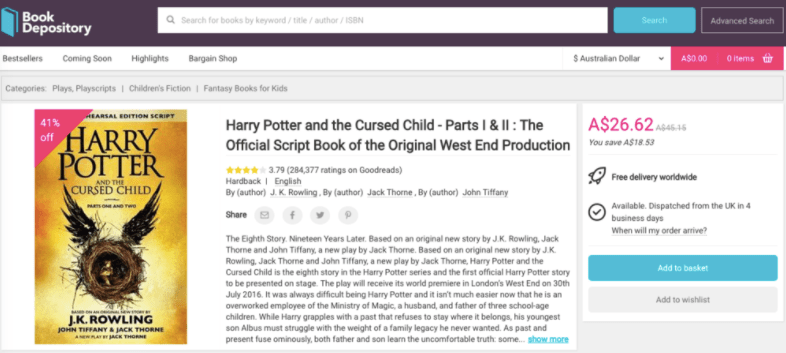BMC Part Five: Channels
(If you’re using the Canvas, you’ll love my free Business Modelling eBook, full of tips for inventing and testing ideas that will change the world)
A channel is your method of bringing happiness to your customer.
Technically speaking, it describes the way you physically deliver your value proposition to each customer segment.
You won’t have to invent a new channel – instead you’re choosing the most appropriate channel for your customer and their desired value proposition.
Let’s look at a hypothetical example:
You’re sitting on a bus, and there are eight other passengers.
Every single one of them is reading the new Harry Potter book, a remarkable coincidence.
So remarkable in fact, that you start asking them about their book (let’s also assume you’re the weird person who strikes up conversations on a bus).
The first person is a 33-year-old barista who grew up with the books.
He bought his copy from Dymocks in the city, having gone there to browse in his lunch break.
The second is a 14-year-old student, who had camped outside her local bookstore for hours on launch day, with 150 others all dressed as various Hogwarts characters.
The third is a 27-year-old junior executive on her way back from the airport.
She bought her copy in Singapore airport, wanting something to read on the flight home.
Image Credit: Book Depository
The fourth is 20-year-old student, whose copy just arrived.
He wanted the cheapest option and was happy to wait, so went through Book Depository.
The fifth is a 42-year-old school mum, who ordered pre-ordered two copies through the school’s book catalogue – one for her, one for her teenage son.
The sixth is a 36-year-old consultant, who is reading hers on a Kindle.
She downloaded the book last night at 3am, and wanted something weightless for travelling.
The seventh is 22-year-old graphic designer, who has also opted for an eBook, but this time on his iPad.
The eighth is a 49-year-old retail manager with her headphones in.
She downloaded the audiobook.
What’s interesting here is that the book itself is not the only value proposition.
Instead, the method of consuming the book has a great deal of influence over customer behaviour, with each customer segment gravitating to their preferred benefit:
Price, convenience, experience, weightlessness, immediacy, etc.
This is why channels matter.
We aren’t picking in isolation, but designing the best option for our customer given their various wants and needs.
There are two types of channel to consider for your business.
The first one is your acquisition channel – how you first encounter and entice your customers.
The second is your delivery channel – how you physically provide the benefits to your customers.
This is important, because they’re often not the same.
You might pick a new phone provider by visiting their store in a shopping centre, but afterwards only every engage with them online.
You might research a restaurant through a review site, then go and enjoy the experience in person.
Or you might hear about a tradesperson through word of mouth, but then schedules a face-to-face appointment to talk about the job.
Every business needs to be an expert at both of its channels.
If you acquire people online, you need to dominate at SEO.
If it’s via foot traffic, you’d better have great signage and a nice fitout.
If it’s via word of mouth, you need to be going above and beyond for each customer, especially as the transaction concludes.
It’s worth experimenting with some “What if…?” hypotheticals.
What if we switched to a digital delivery model in order to reduce prices?
What if we recruited a partner to operate a difficult channel for us?
What if we started advertising in different places in order to entice a different market?
What if we stocked our product in other people’s stores?
What if we cut 80% of our channels to just focus on the top performer?
It's good to keep two things in mind:
A channel should fit naturally with our customer segment, and
A channel should fit naturally with our value proposition.
If we get those right, we’ll see big spikes in our revenues, referrals and customer satisfaction. Win-Win.
Four questions for your business
- Where do we first engage our customers?
- What channels best match our value proposition?
- Are we experts at our chosen channels?
- What creative alternatives could suit our customers?
Now we're on to the Feasibility boxes, starting with Key Resources...
This is a multi-part series on the Business Model Canvas.
If you’d like to jump straight to a particular section, go to:
Overview: How To Use The Business Model Canvas
Desirability: Customer Segments, Value Proposition, Customer Relationships, Channels
Feasibility: Key Resources, Key Activities, Key Partners
Viability: Cost Structure, Revenue Streams
Then once you've made your first canvas:
Reviewing: After Your First Model, Alarm Bells
Reinventing: Testing, What If?
Improving: Metrics, The Business Model Environment
Extensions: Pitching, Social Impact, Making It Great, What Next?













